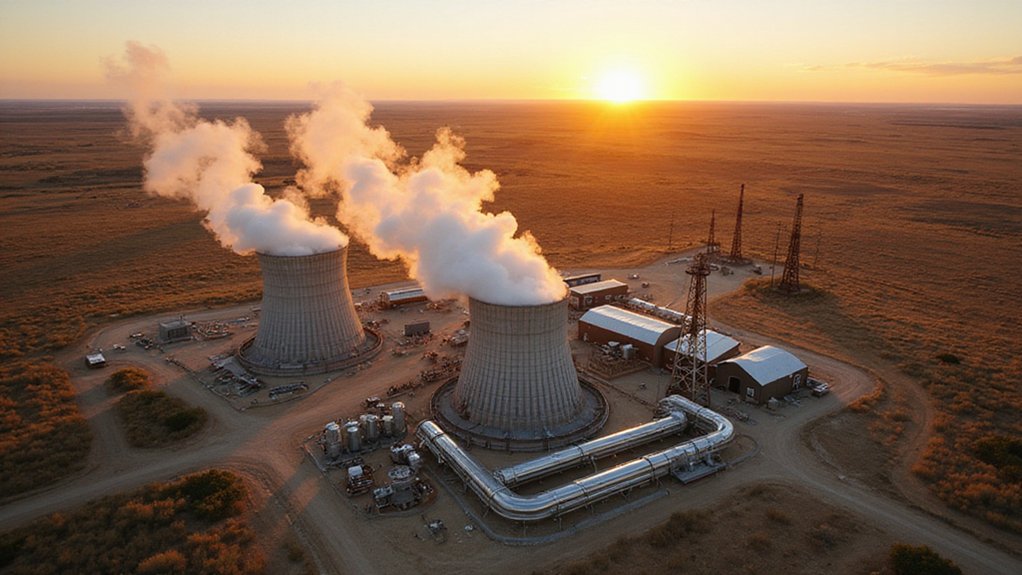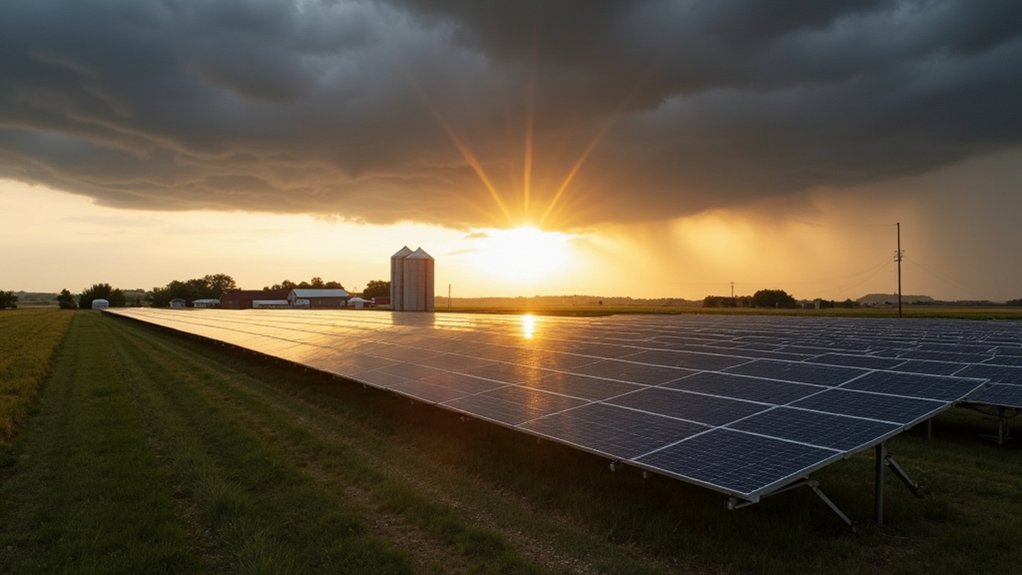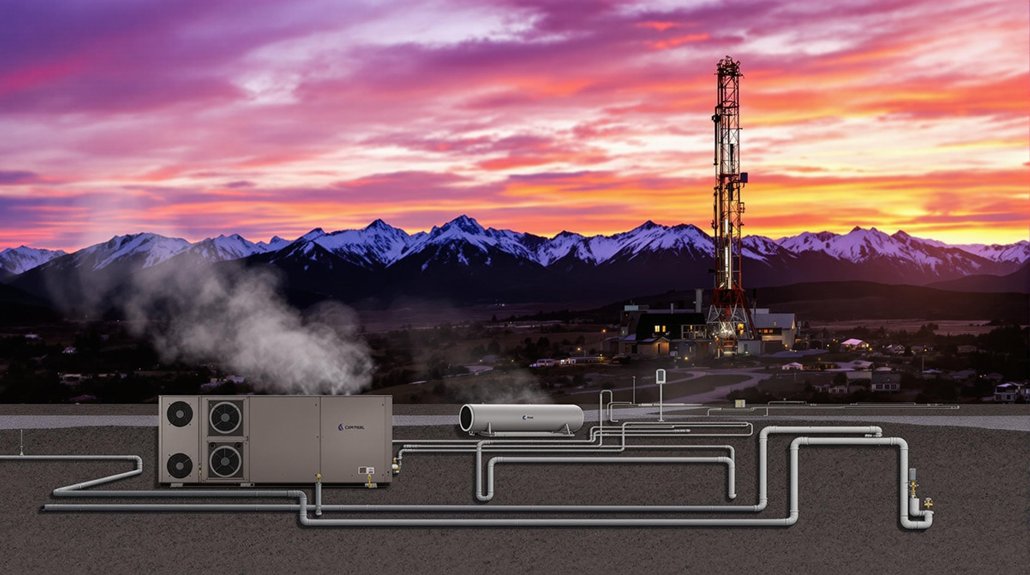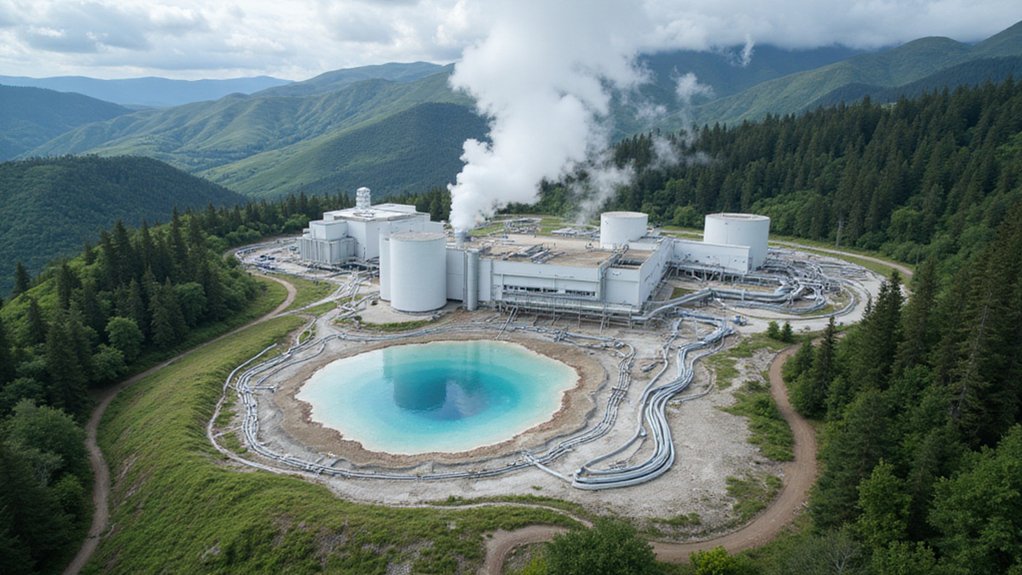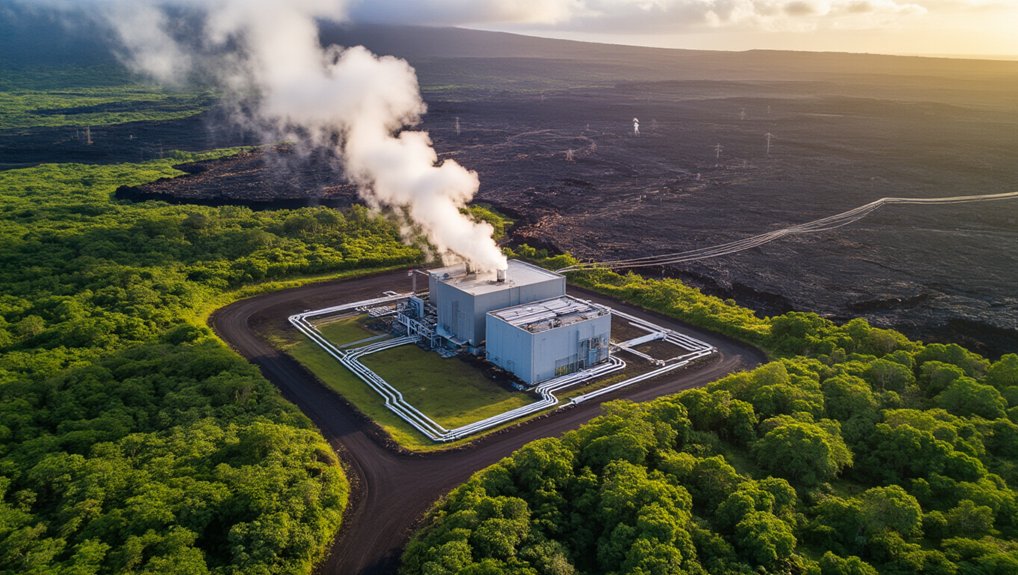Texas sits on a geothermal goldmine: one million exajoules, equivalent to 163,000 billion barrels of oil. Unlike unreliable renewables, geothermal delivers 24/7 power with 95% availability. The oil industry’s skills and infrastructure transfer perfectly. With minimal emissions and land use, geothermal beats other energy sources hands-down. Already powering 10,000 homes, it could generate thousands of times Texas’ energy needs. The state’s energy future might look very different than expected.
While Texas has long been synonymous with oil and gas, a sleeping giant lies beneath its rugged landscape—geothermal energy. We’re talking serious heat. The top 10 kilometers of Texas subsurface contains an estimated one million exajoules—equivalent to 163,000 billion barrels of oil. That’s not a typo. It’s a million times the state’s current annual electricity generation.
Turns out, Texas is even hotter underground than previously thought—up to 15% hotter. Great news for geothermal developers. Over 40 communities sit within 8 km of resources exceeding 50°C. Ready and waiting.
Unlike solar or wind’s on-again-off-again relationship with reliability, geothermal delivers 24/7 baseload power. No storage required. No waiting for the sun to shine or wind to blow. Just constant, reliable energy—like coal or nuclear, minus the baggage. With a remarkable 95% availability factor, geothermal power remains unaffected by weather conditions or time of day.
The oil and gas industry isn’t exactly hurting for opportunities here. Their existing infrastructure, workforce, and billions of barrels of hot produced water annually make for a perfect shift into geothermal. Those abandoned wells? Repurpose them. That drilling expertise? Transfer it. The change practically writes itself.
Texas oil and gas expertise isn’t just drilling fossil fuels—it’s drilling heat. The industry already has everything needed for geothermal success.
Texas already requires 5,880 MW from renewable sources. Geothermal could deliver thousands of times more energy than the state currently needs. Jobs. Investment. Growth. The whole package.
Let’s talk environmental benefits. Minimal greenhouse gases. Tiny land footprint. Negligible water consumption compared to other technologies. And it keeps the lights on during freezing winter storms or scorching summer heatwaves. Recent analysis shows geothermal energy has the lowest lifecycle carbon emissions of any energy technology, making it the cleanest option available. No small consideration for a state that’s experienced grid failures.
Texans have already dipped their toes in—over 140 schools and 10,000 homes use geothermal heat pumps. But that’s nothing compared to what’s possible.
The math is simple. Abundant resource. Existing expertise. Growing demand. Environmental benefits. This comprehensive study from five Texas universities provides the scientific foundation needed to make informed decisions about geothermal development. What’s missing? Just the market incentives and policies to transform all that potential into reality. Texas energy dominance doesn’t have to end with oil. It could just be getting started.
References
- https://energy.utexas.edu/research/geothermal-texas
- https://www.osti.gov/servlets/purl/1216310
- https://www.smu.edu/-/media/site/dedman/academics/programs/geothermal-lab/documents/teachermaterials/texasgeothermalfunfacts.pdf
- https://impactcp.org/insights/the-future-of-geothermal-energy-in-texas/
- https://www.txgea.org/wp-content/uploads/2023/01/The_Future_of_Geothermal_in_Texas_Executive_Summary.pdf
